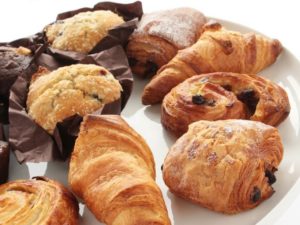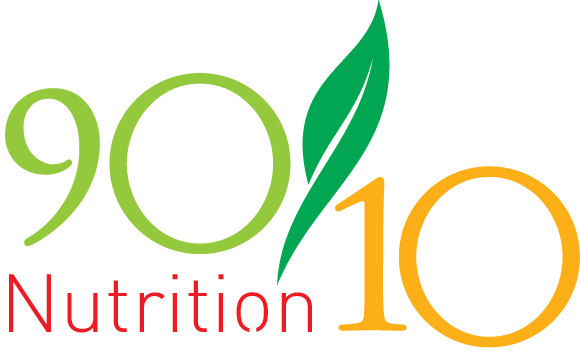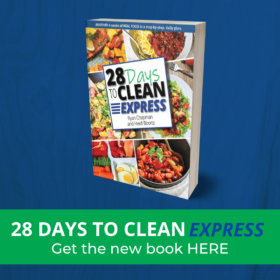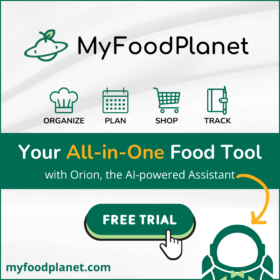Panera Bread recently embarked on what they are calling a “clean journey”. In June 2014, the company promised to strip its menu items of dozens of artificial preservatives, sweeteners and additives by the end of the 2016. This Panera Bread clean food campaign has now been completed. They launched an ad campaign centered around terms like “clean food” and “food as it should be”. One of their ads is embedded below and summarizes the Panera Bread clean food campaign.
The Panera Bread Clean Food Claim
The ad finishes by saying “100% of our food will be clean by year’s end”. Essentially, what they say on their website is that food that doesn’t have any of the ingredients that they list on their “no-no list” can be considered “clean food”. This includes their bakery full of pastries, cookies, and breads. They even use the term “Clean Bakery” right HERE on their website.20
Does Clean Food = Clean Eating?
The main question this blog seeks to answer is this: Does the Panera Bread Clean Food claim fit in with “Clean Eating”? This should be easy, right? We should be able to just quote the dictionary definition of Clean Eating and compare it to the Panera Bread claim and see if they are pretty much the same, right? Unfortunately, it’s not that easy and that’s exactly why I’m writing this blog. You see, “Clean Eating” doesn’t actually have a definition. Most dieticians and nutritionists seem to want to distance themselves from the term since some use it to mean different things. If you want to see what I mean, just search the hashtag #cleaneating on Instagram and see what you come up with. It’s incredible. As of today, that hashtag returns 33,338,768 posts on Instagram. I’m willing to bet that more than a few of those posts don’t meet my standards for clean eating.
Defining Clean Eating
I’ve been involved in the clean eating world since 2010 when I personally learned what getting rid of packaged foods (even “health foods”) could do for my own health. I started 90/10 Nutrition in early 2012 as a way to share those principles with other people. Since I’ve always prided myself on being a student of anything I do, I immersed myself in the clean eating world (at least the way it was back then). I didn’t really call it “clean eating” at first. I was just seeing things that I agreed with based on my own experiments (one of those is HERE). During all of that research, clean eating was the term I came across most often that seemed to be associated with what worked for me and made sense to me. It seemed that, back in 2012, if you came across a blog with “clean eating recipes”, you would almost be sure to find recipes that would meet a criteria similar to this one:
A diet of lean meats, vegetables, fruits, whole grains, and healthy fats in a state as close to their natural state as possible. Refined grains, refined sugars, overly-processed foods and artificial ingredients are avoided or minimized.
That’s pretty close to what clean eating has meant to me and pretty much all of the bloggers and recipe creators that I know that use the term Clean Eating. We don’t eat (or rarely eat) refined white flour, white rice, added refined sugars, artificial sweeteners, colors, preservatives, or just about anything we couldn’t buy in the store and make for ourselves.
The Problem With Panera's Claim
There are two very specific things that are pretty widely covered in clean eating programs that would not be considered “no-nos” by the Panera Bread clean food definition. Those two things are refined sugars (added sugars) and refined flour. This could also be extended to white rice. Essentially, almost all clean eating programs address refined sugars and non-whole grains.

In most of the definitions of clean eating that I can find on the internet, refined grains and refined sugars are on the list to avoid (including Tosca Reno’s program that may have actually started the clean eating terminology). In our program, refined grains are on our “yellow tier“, which means you can have some (up to 10%). Refined sugars are on our “red tier” which means you should avoid it except for special occasions. Here are some examples of other clean eating definitions and descriptions:
✔️ Tosca Reno’s Eat Clean Program
So, here’s the main issue with the Panera Bread Clean Food claim:
A good portion of their menu consists specifically of REFINED GRAINS AND ADDED SUGARS!!!!!
Think about it. When you walk into Panera, the first thing you are met with is breads, pastries, and cookies that are loaded with refined grains and sugar. These are NOT in the definition of ANY clean eating program that I know of anywhere. The sandwiches are made with bread that is made with refined flour (even the “whole grain” ones have some refined flour). The combos come with a refined flour baguette. The dressings have refined sugar in them.
Deceptive Marketing or Harmless Difference of Definition?
If you read the links above that provide descriptions of clean eating from some of the most well-known sources for clean eating on the web, you can probably see that the Panera Bread clean food claim is NOT the same thing. However, when you read their website, they do meet the standards they have set for themselves for achieving “100% clean food”. So, is this just a harmless use of terms like “clean food” to describe what they set out to do, or is it appropriation of the term “clean” for something that doesn’t meet the most widely accepted standard?
Here’s my opinion:
I think it is deceptive whether they intended it to be or not. A term such as “clean food” is pretty widely associated with and equated with “healthy”. I know from experience working with people on their eating choices for over 7 years now that MANY people will trust that clean food equals healthy food. In this case, that clearly is NOT true. So, I think the result of this campaign is that a lot of unsuspecting people will think they are eating healthy simply because they are at Panera.
Final Thoughts
Please understand, the point of this blog is to talk about the difference between the Panera Bread clean food claim and what we know as “clean eating” and the issues that arise from that. I do think it is wonderful to see a company like Panera take the initiative to remove so many things from their ingredients that may be harmful. Their attempt to make their food more nutritious is NOT a bad thing. There are some options at Panera that would be much better options than many other fast food places, but that doesn’t change the fact their menu is highly centered around refined grains and refined sugar. While I applaud them for removing many of the ingredients that they did, their reference to “clean food” feels a lot like tagging along on a term that has caught on even though their foods don’t meet the commonly accepted intent of the term. As my colleague Heidi put it: Panera has dirtied the word “clean”.



Comments (6)
I totally agree with you, but I do see their effort as a first step. I think the public (or at least those of us in the know) needs to keep after chains like this to “clean up” their offerings. It’s the only way it will happen.
Cheryl, I agree. Definitely better than before. I’m glad they did the clean up they did. I just don’t like the terms they use and the advertising around it. I am so afraid of confusion and misdirection to those not in the know. I mean, it’s a bread and pastry place! haha!
I used to love Panera and would say that it’s so healthy. But after learning to ask about ingredients, not so much. It’s still better than most fast food but you really have to look ahead.
[…] few weeks back, we talked about the Panera Bread “100% clean food” claim. Our verdict: NOT CLEAN. While the company’s removal of preservatives from its menu is […]
I think Panera is sliding in the wrong direction. Quality is slipping. It used to be my first choice, no more. The menu needs new items. There needs to be gluten free options. Menu is boring and predictable. Innovation does not live here any longer. It makes me sad.
I eat panera on my cheat days. I think its alot better than most stuff out there.